Introducing children to American Sign Language (ASL) at an early age can significantly enhance their communication skills, cultural awareness and cognitive development. Engaging books made for young children make this challenge both enjoyable and educational. Below is a curated list of ten exceptional ASL books for kids, each designed to welcome them into the world of sign language.

What Are the Best Sign Language Books for Kids?
Teaching your kids sign language is a wonderful way to help them communicate, explore new skills and connect with others. The right books can make learning fun and easy, with colorful visuals and simple instructions. Check out these top sign language books that will spark your child’s interest and excitement!
1. "My First Book of Sign Language", by Joan Holub
This beginner's book introduces the ASL alphabet, pairing each letter with corresponding signs and beautiful illustrations. It's an excellent starting point for young children to familiarize themselves with basic signs! Why It’s Great: The simplicity and colorful presentation keep children engaged.
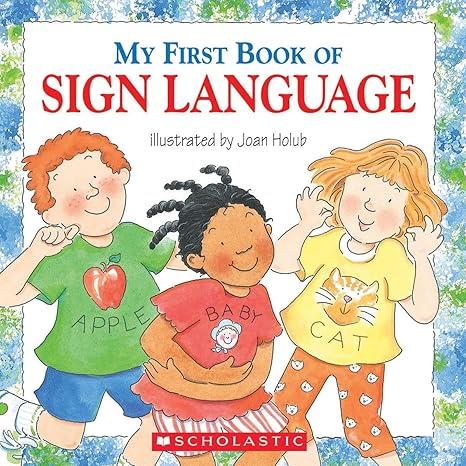
The book introduces basic skills in a way that feels more like play than study! It includes everyday signs, making it a useful tool for children and parents to learn together. The playful artwork complements the learning process, helping kids associate signs with visual cues. "My First Book of Sign Language" encourages interaction, aiding in a shared interest in learning sign language.
Recommended Age Groups: This book is best suited for children aged 3 to 8 years old, with particular appeal to preschoolers and early elementary-aged kids. Parents of toddlers can also use it as a gentle introduction to sign language. The book’s sturdy design can withstand enthusiastic handling by younger readers and it's compact size makes it easy to carry, perfect for learning on the go!
2. "Sign Language ABC", by Lora Heller
"Sign Language ABC" offers a colorful way through the alphabet teaching children the ASL signs for each letter alongside engaging images. This book serves as a fun and educational tool for young children. The visually appealing illustrations captivate children’s attention while the clear demonstrations of ASL signs allow easy learning.
The book encourages interaction making it ideal for shared reading between parents, educators and children! Additionally, it introduces kids to the concept of inclusivity by exposing them to sign language early on. The combination of literacy and ASL learning makes it a versatile resource for schools, libraries and homes alike.
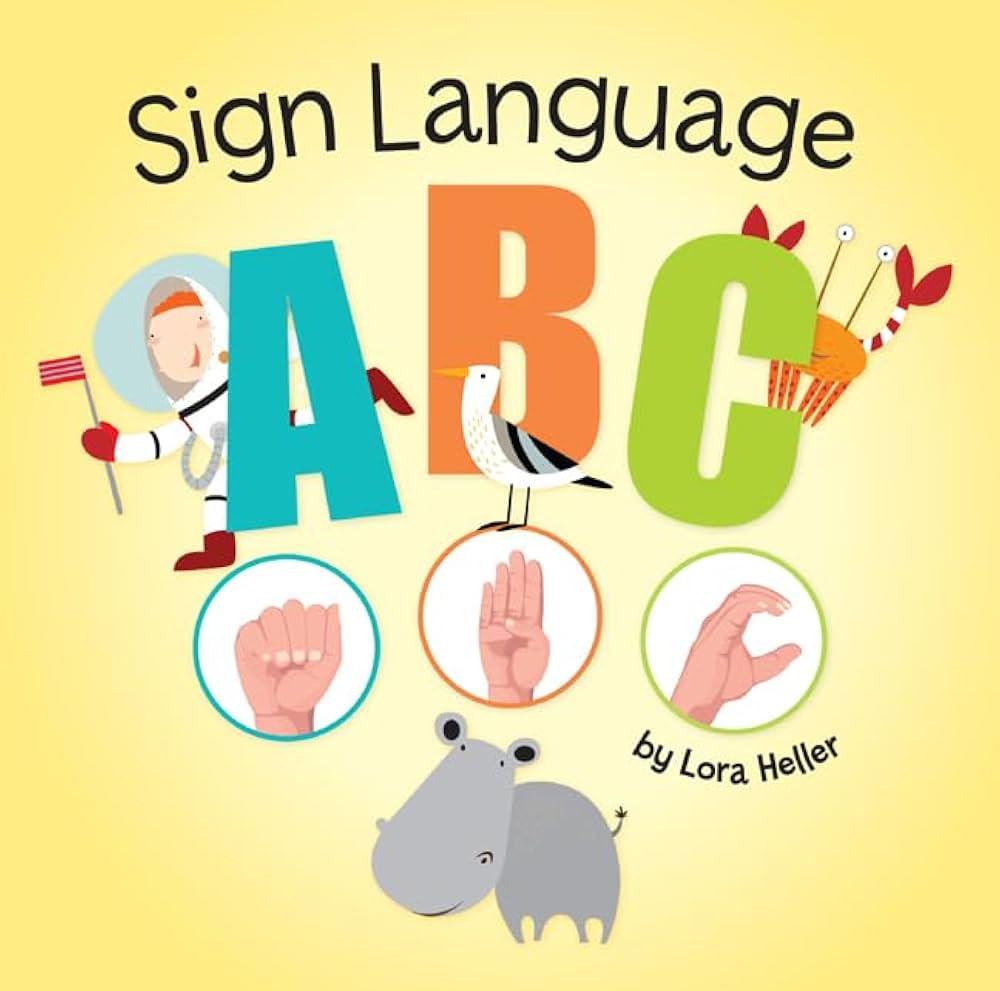
Why It’s Great: Alphabet-based learning supports early literacy while simultaneously teaching ASL making it a two-in-one resource for young readers. The fun images and simple explanations create a perfect introduction to ASL for young children. It also develops better communication skills and helps children appreciate diverse methods of expression!
Recommended Age Groups: This book is ideal for children aged 3 to 7 years making it perfect for preschoolers, kindergarteners and early elementary students.
3."Hands & Hearts" by Donna Jo Napoli
This beautifully illustrated story follows a mother and daughter as they spend a day at the beach, incorporating ASL signs throughout their adventure. The book provides a narrative context for learning signs related to daily activities.
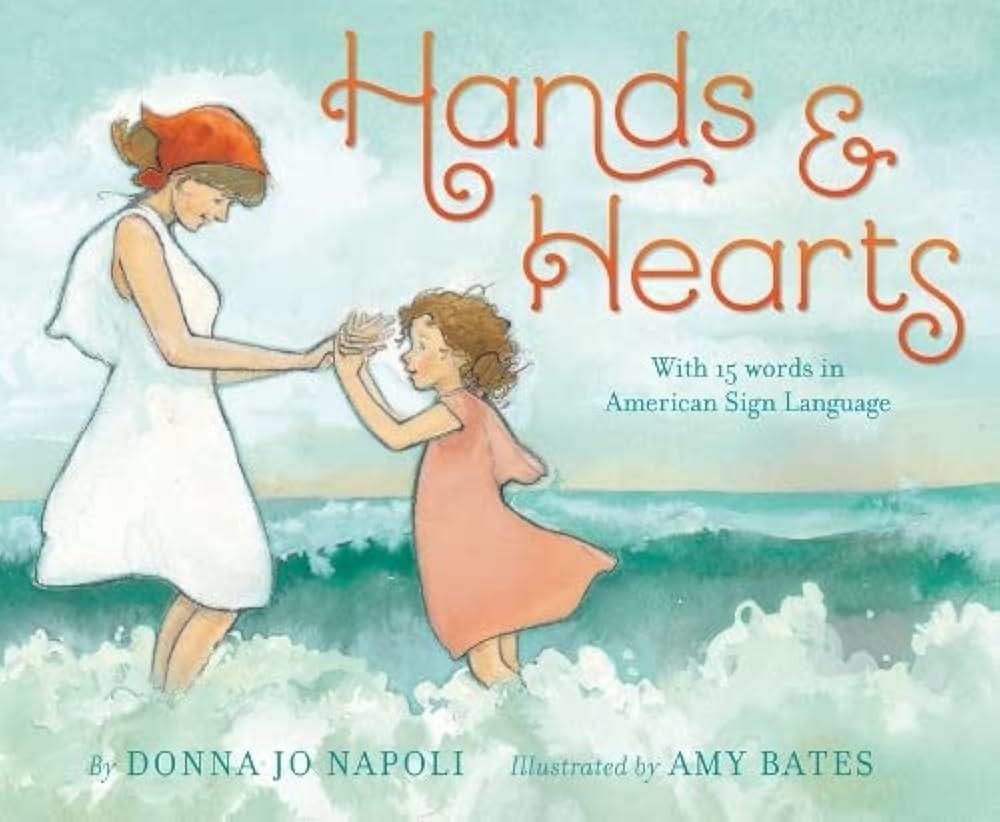
Why It’s Great: The narrative approach helps children connect signs to real-life contexts, reinforcing their practical use in everyday situations.
Recommended Age Groups: This book is ideal for children aged from 3 to 8 years old.
This range makes this book suitable for preschoolers, kindergarteners and early elementary school children who can engage with its interactive story and enjoy learning basic sign language.
4. "Time to Sign: Sign Language for kids", by Kathryn Clay
Designed for children, this book introduces a variety of signs through clear instructions and photographs. It covers everyday topics, making it practical for young children to apply their new skills.
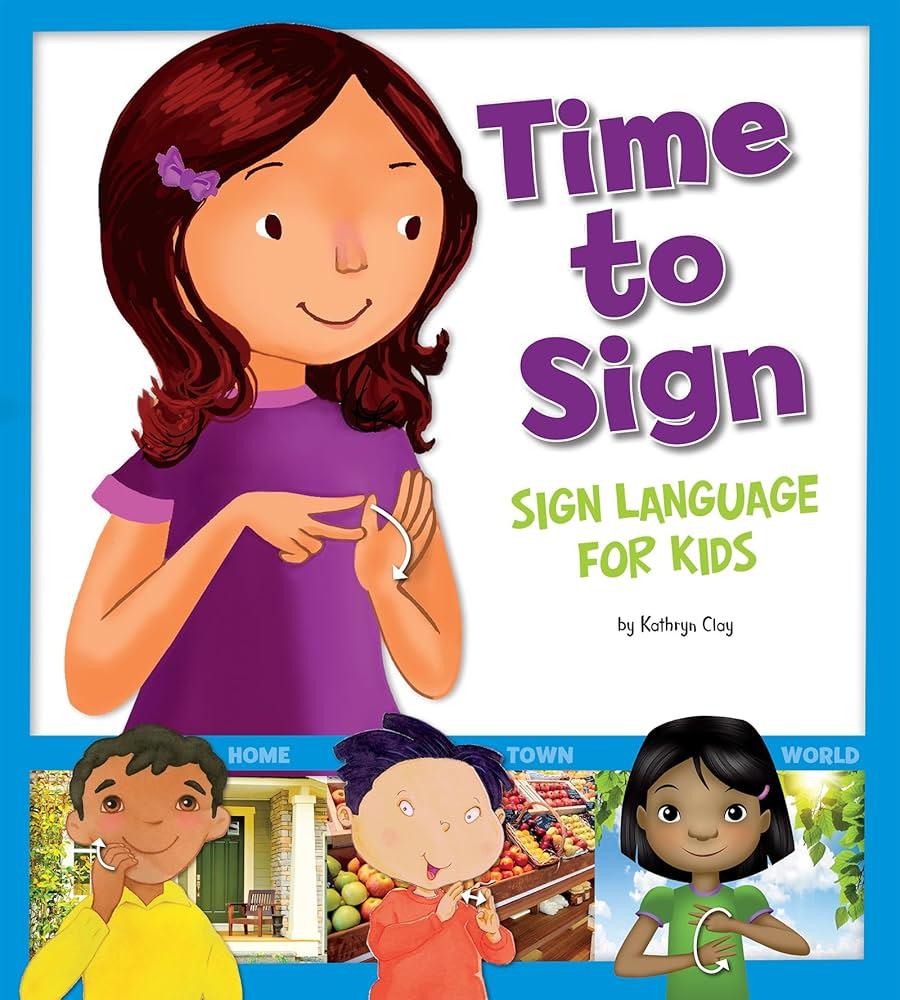
Why It’s Great: The focus on daily routines and objects ensures children learn relevant and frequently used signs, helping them communicate effectively at home or school.
Recommended Age Groups: : This book is perfect for children aged from 4 to 8 years old. It’s a great fit for preschoolers and early elementary students as it offers a fun and engaging way to explore American Sign Language (ASL).
With simple illustrations and instructions, this book makes learning ASL accessible and enjoyable for young readers!
5. "Dachy's Deaf", by Jack Hughes
Part of the "Dinosaur Friends" series, this story features Dachy, a deaf dinosaur and his friends. The book promotes understanding and inclusion, introducing basic signs in a relatable context.
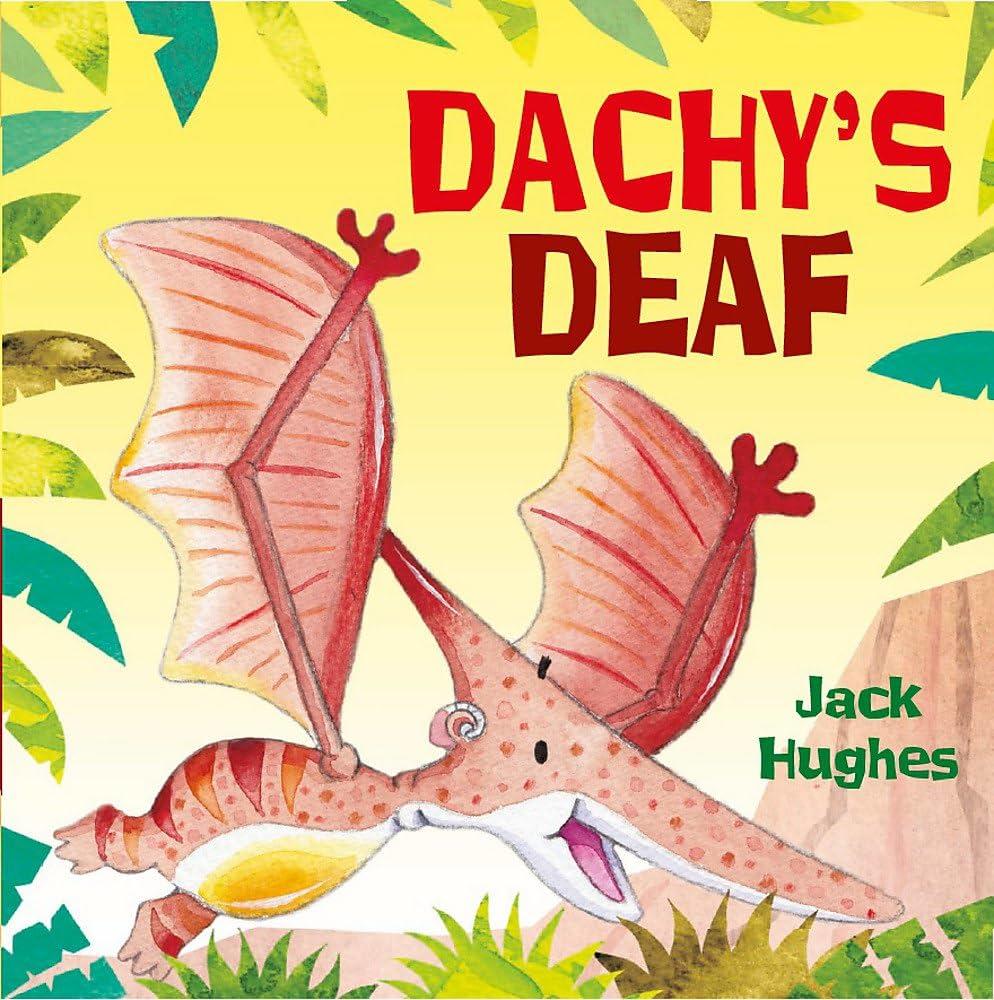
Why It’s Great: By presenting a deaf character in a positive and empowering light, the book encourages empathy and inclusivity among children.
Recommended Age Groups: This wonderful book is recommended for children aged 4 to 7 years old. It is an ideal choice for preschoolers and early elementary kids.
Through its gentle narrative, the book helps young readers celebrate diversity. It presents a heartwarming story that encourages understanding and support for friends with different needs!
6. "My First Baby Signs", by Phil Conigliaro and Tae Won Yu
Aimed at the youngest learners, this board book presents simple signs for common words like "eat," "more" and "all done." It is perfect for infants and toddlers beginning their sign language learning challenge!
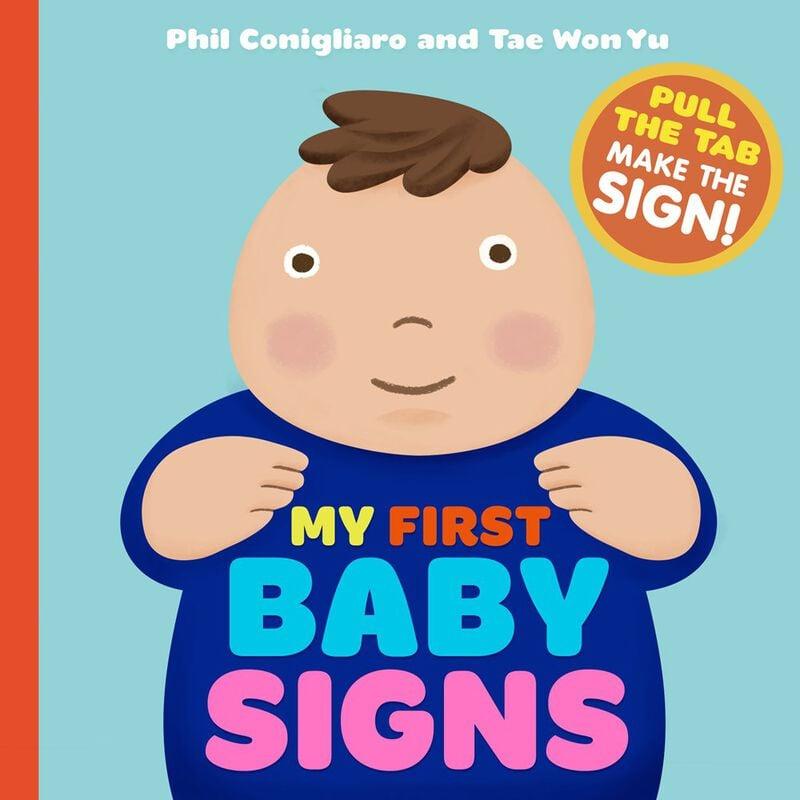
Why It’s Great: This book is specifically designed for tiny hands and young minds. It focuses on easy-to-imitate signs that parents and children can practice together!
Recommended Age Groups: This book is designed for infants and toddlers, typically ranging from birth to 3 years old.
This interactive hard covered book introduces young children to basic sign language, facilitating early communication before they develop their verbal skills. The engaging illustrations and simple signs make it an excellent resource for parents and caregivers to use with their little ones during daily routines.
7. "Nita's Day: More Signs for Babies and Parents", by Kathy MacMillan
Following a day in the life of a young girl, this book introduces signs for daily routines. It's a valuable resource for parents and children to learn together!
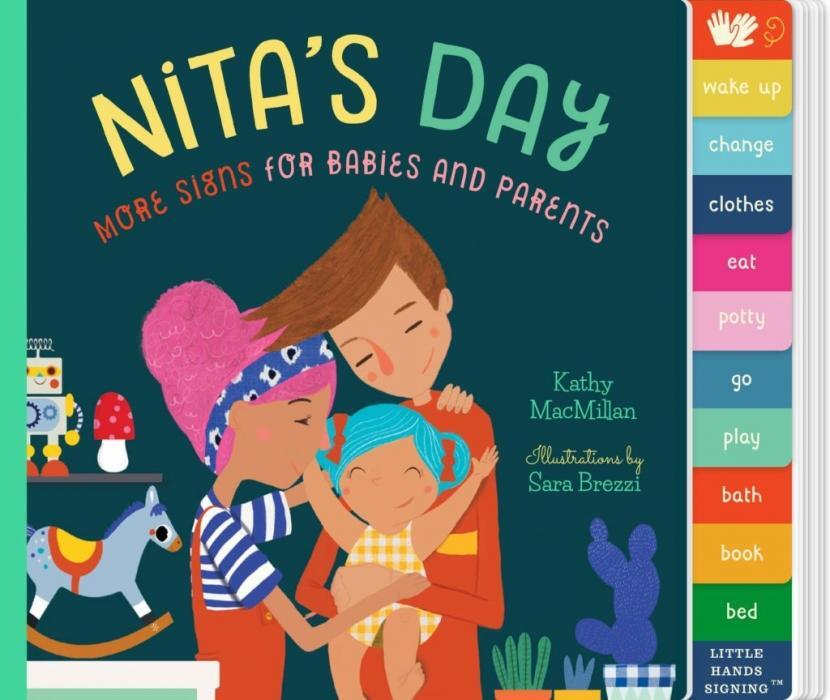
Why It’s Great: The story format makes learning engaging, while the focus on daily routines ensures practical application for kids and parents.
Recommended Age Groups: "Nita's Day: More Signs for Babies and Parents" is perfect for toddlers aged from 1 to 3 years old.
This interactive picture book introduces ten simple American Sign Language (ASL) signs that fit seamlessly into a young child’s daily routine, like "wake up," "eat" and "play." With sliding panels and clear instructions for each sign, it’s a fun and engaging way for parents and little ones to learn and practice ASL together!
8. "Baby Signs: A Baby-Sized Introduction to Speaking with Sign Language", by Joy Allen
This board book offers a simple introduction to baby sign language, featuring clear illustrations and easy-to-follow instructions for essential signs.
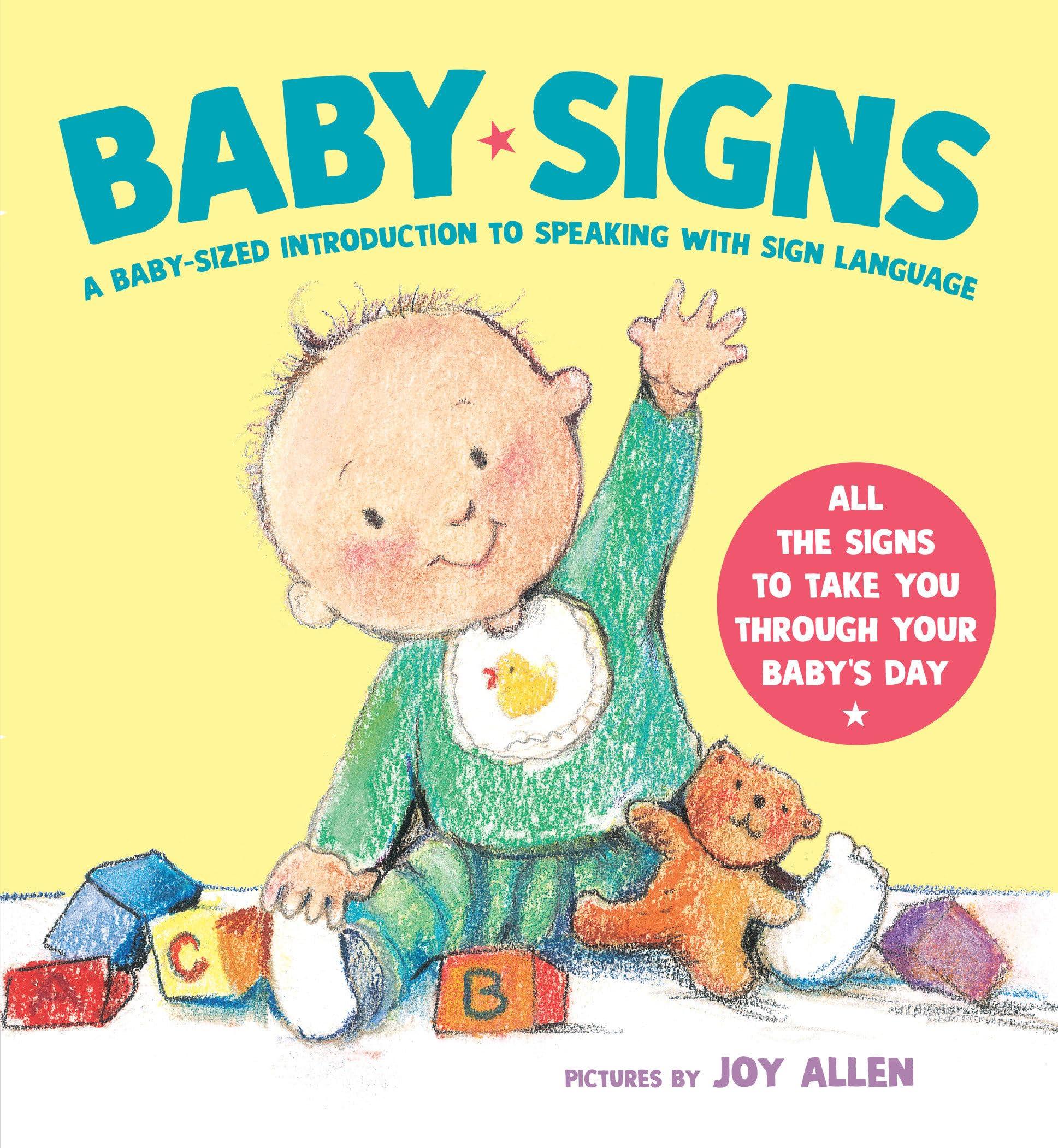
Why It’s Great: Its durable design and straightforward content make it a handy tool for parents introducing their babies to signing.
Recommended Age Groups: "Baby Signs: A Baby-Sized Introduction to Speaking with Sign Language" by Joy Allen is a great choice for babies and toddlers, typically ranging from newborn to 3 years old.
This book introduces basic signs that allow young children to communicate their needs and emotions before they learn to talk. Featuring easy-to-follow illustrations and straightforward instructions, this book is a great resource for parents and caregivers to encourage early communication and build stronger connections with their little ones!
9. "The Baby Signing Book: Includes 450 ASL Signs for Babies and Toddlers", by Sara Bingham
A easy to read comprehensive guide for parents, this book provides a wide range of signs along with tips on how to incorporate signing into daily routines with young children!
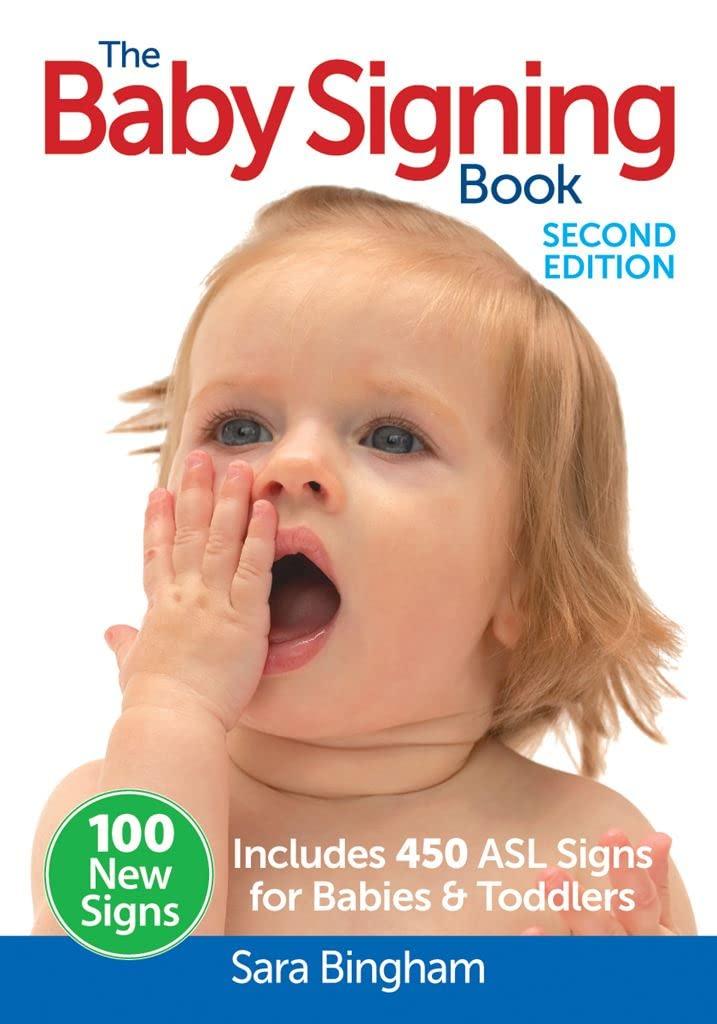
Why It’s Great: The extensive vocabulary ensures continued learning as children grow, while tips for parents make it user-friendly.
Recommended Age Groups: This second edition book is perfect for children from birth to age 3. It offers clear and age-appropriate guidance for introducing sign language to young children, making it easier for parents and caregivers to teach ASL as their little ones grow.
With 450 signs to explore, this book is a valuable resource for fostering early communication and strengthening bonds between parents and their babies.
10. "We Can Sign!: An Essential Illustrated Guide to American Sign Language for Kids", by Tara Adams
This illustrated book offers a fun and engaging way for children to learn ASL. It covers a variety of topics and provides clear instructions for each sign.
Why It’s Great: The variety of topics allows kids to learn signs relevant to different aspects of their lives, keeping them captivated.
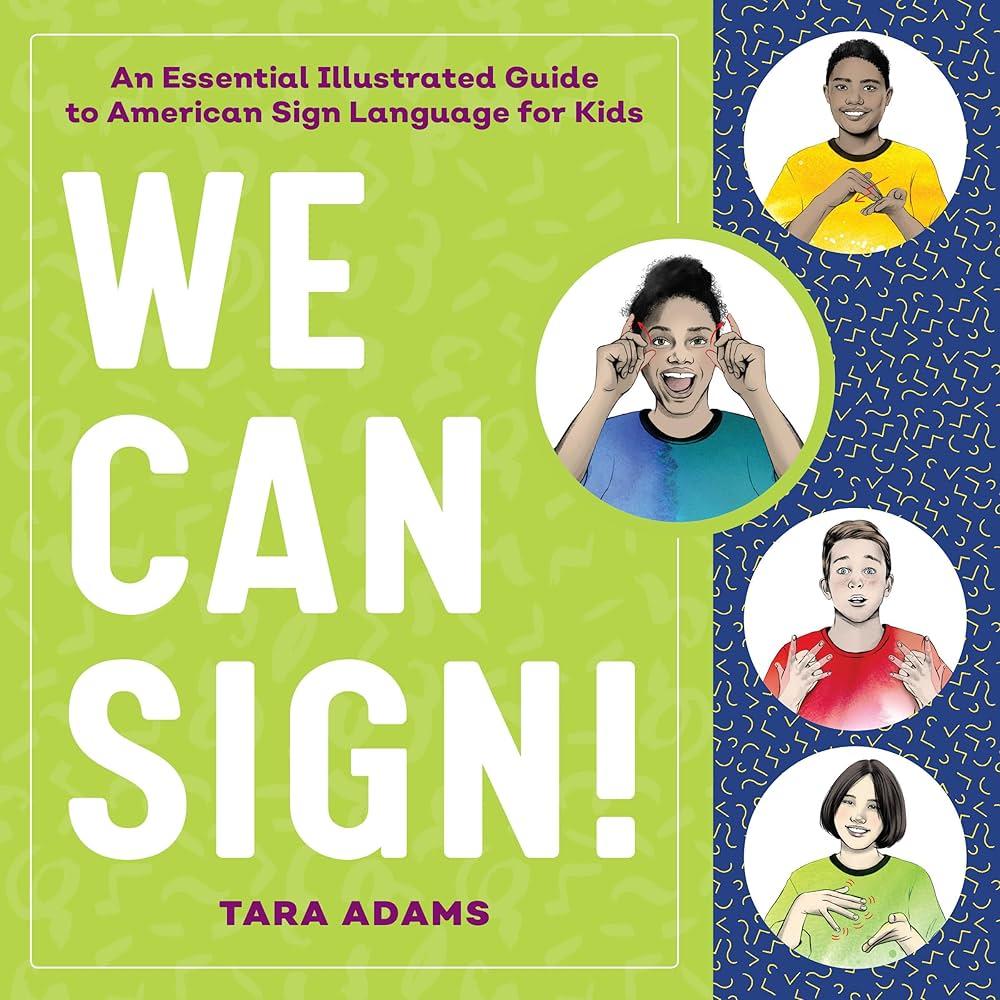
Recommended Age Groups: This book is a fantastic resource for children aged from 8 to 12 years old. This makes it a perfect fit for 10-year-olds who are eager to learn new skills in a fun and engaging way. The book is designed with colorful illustrations and straightforward instructions that make American Sign Language (ASL) accessible and enjoyable for young children.
"We Can Sign" introduces essential signs and phrases in a way that feels approachable, making your "homework" fun and exciting! This book definitely provides a strong foundation when learning basic sign language.
Benefits of Reading, Learning and Practicing Sign Language
Introducing children to sign language offers numerous advantages. That's correct, it not only improves communication skills, but also promotes understanding and empathy by helping children connect with the Deaf and hard-of-hearing community! Learning sign language has also been shown to boost cognitive abilities, including memory, focus, and problem-solving skills. Moreover, it can improve fine motor skills and encourage the development of early literacy in younger children. Let’s take a closer look at a few of these benefits together!

- Enhanced Communication Skills: Learning ASL enables children to express themselves more effectively, especially before they develop verbal skills. This reduces frustration and builds confidence in their ability to communicate.
- Cognitive Development: Engaging in sign language can improve memory, attention and problem-solving abilities. Studies show that bilingual children (including those who learn ASL) often perform better in areas like math and reading.
- Cultural Awareness: Understanding ASL fosters appreciation for the Deaf community and promotes inclusivity. Children learn that diversity enriches our world and that different ways of communication are equally valuable.
- Strengthened Parent-Child Bond: Signing with children can enhance bonding and reduce frustration by facilitating better communication. This is especially beneficial during the pre-verbal years, when children often struggle to express their needs.
- Improved Emotional Intelligence: Signing allows children to communicate complex emotions before they can articulate them verbally. This leads to better emotional regulation and understanding.
- Preparation for Multilingualism: Learning ASL introduces children to the idea of communicating in multiple "languages," laying a foundation for future language learning. Here a fun video with more benefits of teaching your children ASL!

Incorporating ASL into Your Child's Routine
Learning ASL isn’t limited to books. Here are some ways to incorporate sign language into your child’s routine.
- Storytime Integration: Choose books that combine stories with ASL signs to enhance understanding.
- Everyday Signs: Use signs for common words like "eat," "drink," "more" and "help" during daily activities.
- Games and Songs: Engage children with games and songs that include signing. Here's a dynamic YouTube video that'll make you dance and learn ASL at the same time!
- ASL Videos and Apps: Supplement books with digital resources for a more interactive learning experience. What are the best ASL apps for children?
- Sign Language Classes: Enroll in family-friendly ASL classes to learn alongside your child.
Superprof's Private ASL Lessons with a Qualified Tutor
For families interested in furthering their ASL education, Superprof offers personalized tutoring sessions meant to meet individual learning needs. With a global network of experienced instructors, Superprof provides flexible options for both in-person and online lessons. Whether you’re a parent looking to learn alongside your child or a family seeking advanced ASL instruction, Superprof tutors are equipped to guide you every step of the way.
Why choose Superprof?
- One-on-one sessions ensure personalized attention.
- Tutors are available for all skill levels, from beginners to advanced.
- Flexible scheduling makes it easy to fit lessons into your routine.
- Online lessons mean you can learn from the comfort of your home.
The Long-Term Impact of Learning ASL
Learning ASL doesn’t just benefit children during their early years. As they grow, they’ll continue to reap the rewards of this unique skill. Here’s how:
Career Opportunities
Proficiency in ASL can open doors to careers in education, interpreting and healthcare.
Enhanced Social Skills
Learning ASL fosters empathy and the ability to communicate with a broader range of people.
Lifelong Learning
Mastering ASL often sparks a love for learning and exploration, encouraging children to embrace new challenges.
By introducing your child to ASL through engaging books and supportive resources like Superprof, you’re giving them the tools to connect with the world in meaningful ways. Whether it’s signing "I love you" to a parent or learning how to have a full conversation with a Deaf peer, the possibilities are endless.
By choosing the right books, incorporating daily practice and utilizing resources like Superprof, families can work on communication and connection. Whether you’re teaching a toddler their first signs or helping an older child explore a new language, the benefits of ASL will last a lifetime. Let's get started together!















